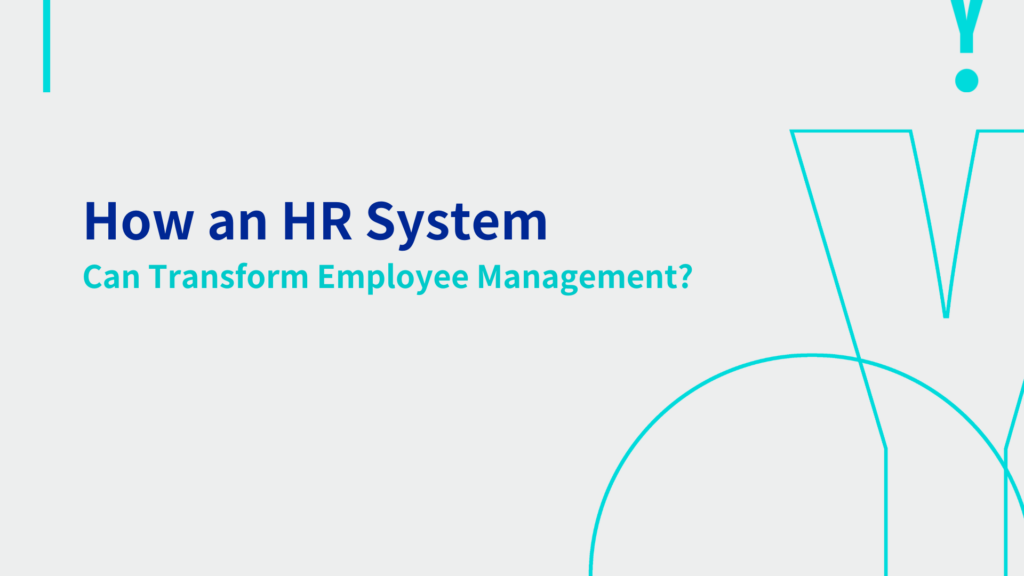
In today’s fast-evolving business environment, organisations are under constant pressure to do more with less — to increase efficiency, reduce costs, and unlock the fullest potential of their workforce. For many companies, the human resources (HR) function remains a critical but often over-subscribed bottleneck: manual paperwork, disjointed spreadsheets, repeated follow-ups, and compliance risks all sap time and attention from strategic work. Yet employees expect seamless digital experiences in every facet of their lives — including how they interact with HR.
That’s where a modern HR system comes in. A well-designed HR management system (HRMS / HRIS) can transform how HR teams operate and how employees engage with policies, processes, and their own career paths. By centralising data, automating workflows, delivering real-time analytics, and enabling employee self-service, such systems elevate HR from tactical administration to strategic enabler. In this post, we’ll explore how a robust HR system reshapes employee management — from onboarding to performance and retention — and deliver tangible business value.
- How an HR System Transforms Employee Management?
- Centralised Employee Data & Digital Records
- Automated Workflows & Approvals
- Attendance, Time Tracking & Shift Scheduling
- Leave Management & Absence Tracking
- Payroll Integration & Automatic Salary Calculation
- Employee Self-Service & Engagement
- Performance Management & Feedback Loops
- Analytics, Insights & Predictive HR
- Compliance, Security & Auditability
- Scalability, Integration & Ecosystem
- End Notes
How an HR System Transforms Employee Management?
Below are key areas in which a modern HR system drives change, and why that matters in practice.
Centralised Employee Data & Digital Records
One of the foundational benefits is having a single source of truth: all employee data — personal information, contract terms, employment history, performance records, leave balances, etc. — stored and maintained in one secure system. This eliminates fragmented spreadsheets or disparate folders. HR can instantly pull up accurate employee profiles, reducing mistakes from manual data entry or version mismatches.
Digital record-keeping also simplifies compliance (audits, data retention policies, reporting), while enabling historical tracking (changes over time) and easy export or integration with other systems.
Automated Workflows & Approvals
Manual routing of requests — for leave, expense reimbursement, travel, promotion approvals, etc. — is time-consuming and error-prone. An HR system lets you define automated workflows: set approval sequences, trigger notifications, enforce escalation rules, and track progress via dashboards. This accelerates turnaround times, reduces administrative overhead, and ensures accountability and audit trails.
Workflows also reduce “lost paperwork” or overlooked requests. HR can focus on exceptions and oversight rather than chasing forms.
Attendance, Time Tracking & Shift Scheduling
Accurate attendance and time tracking underpin many HR and payroll processes. With an integrated HR system, you can support multiple clock-in options (biometric, GPS, mobile, Wi-Fi), automatically log check-ins/outs, identify late arrivals or early departures, and flag unusual patterns.
Further, for businesses with shift-based operations, roster scheduling becomes far simpler: the system can create shift templates, allow batch assignments, handle shift swaps, and instantly synchronise changes to employees’ mobile calendars. This replaces inefficient Excel sheets or manual paper schedules.
Leave Management & Absence Tracking
Leave and absence management is a perennial pain point: calculating entitlement, approving requests, tracking balances, ensuring coverage, and enforcing policies. A modern HR system centralises all of this. Employees can submit leave requests via self-service, see their remaining balance, track the approval status, and integrate the leave data into scheduling and payroll.
The system can enforce leave rules (carryover limits, blackout periods, eligibility), generate alerts for expiry, and provide managers with transparency into team-level absence trends.
Payroll Integration & Automatic Salary Calculation
Perhaps one of the most visible benefits for employees is accurate, timely compensation. When attendance, leave, allowances, deductions, and tax rules are systematically integrated, the HR system can automatically compute salaries, overtime, bonuses, tax withholdings, and generate e-payslips. This minimises manual intervention and reduces errors dramatically.
This direct linkage between HR activities (attendance, leave) and payroll removes silos and ensures consistency across functions.
Employee Self-Service & Engagement
A big shift is giving employees control via self-service portals or mobile apps. Through those, employees can:
- View and update personal information
- See payslips, benefits, and tax documents
- Submit leave requests, reimbursements, and shift swap requests
- Track the status of their requests
- Access policies, announcements, and HR documents
This not only empowers employees but also lightens the burden on HR staff, who no longer need to manually respond to routine queries.
Performance Management & Feedback Loops
Beyond administrative tasks, HR platforms often support goal-setting, performance reviews, continuous feedback, and development plans. When performance data is tied to employee records, you get holistic visibility into how individuals and teams evolve. Some platforms even support 360° reviews, peer feedback, or integration with learning systems.
This enables more data-driven talent decisions — promotions, training needs, succession planning — rather than relying on fragmented spreadsheets or informal feedback.
Analytics, Insights & Predictive HR
One of the strategic advantages of a modern HR system is data analytics. You can generate dashboards and reports on turnover, recruitment funnel metrics, absenteeism trends, overtime costs, performance distribution, headcount forecasting, and more. With historical data and predictive models, HR teams can anticipate attrition risk, identify cost levers, or spot patterns early.
Compliance, Security & Auditability
HR data is sensitive — salary, identity, health records, etc. A good HR system software operates with robust security measures: encryption, role-based access, audit logs, and compliance with data protection regulations (e.g., GDPR, local labour law requirements). It also offers standardised audit trails: who changed what, when, and why — critical for legal compliance and internal governance.
Scalability, Integration & Ecosystem
As organisations grow, a scalable HR system can evolve (adding modules, supporting multiple regions, handling more headcount). Integration with other enterprise systems (ERP, accounting, CRM, learning management systems) ensures seamless data flow and avoids duplicate data entry. Rather than piecemeal point solutions, an HR system becomes the central backbone of the people ecosystem.
End Notes
In sum, an HR system — properly chosen and implemented — can revolutionise employee management. It allows HR teams to elevate their role from paperwork administrators to strategic business partners. It gives employees transparency and control. And it helps leadership make smarter decisions, scale operations, and mitigate risk.If you’re evaluating a comprehensive, modern HR platform, consider Yoov. To see firsthand how an HR system can transform your operations, visit us and explore our HR solution capabilities.
Connect with YOOV

WhatsApp:Click Here
Email:hello@yoov.com
Website:https://www.yoov.com/